Black Oxford Shoes,Tan Oxford Shoes,Leather Oxford Shoes,Casual Oxford Shoes GDMK GROUP WEIHAI SHOES CO., LTD. , https://www.gdmkgroup.com
shelley’s gallery-cappuccino dress
Last Christmas, I gave my mom two pieces of fabric that I thought she'd love, promising her that I’d turn them into whatever she wanted. Both fabrics were a beautiful jacquard double cotton—soft yet substantial, with just the right amount of warmth.
Her first pick was immediate and clear-cut: another Gallery Dress. She already owned one I’d originally made for myself but eventually outgrew, and she adores wearing it.
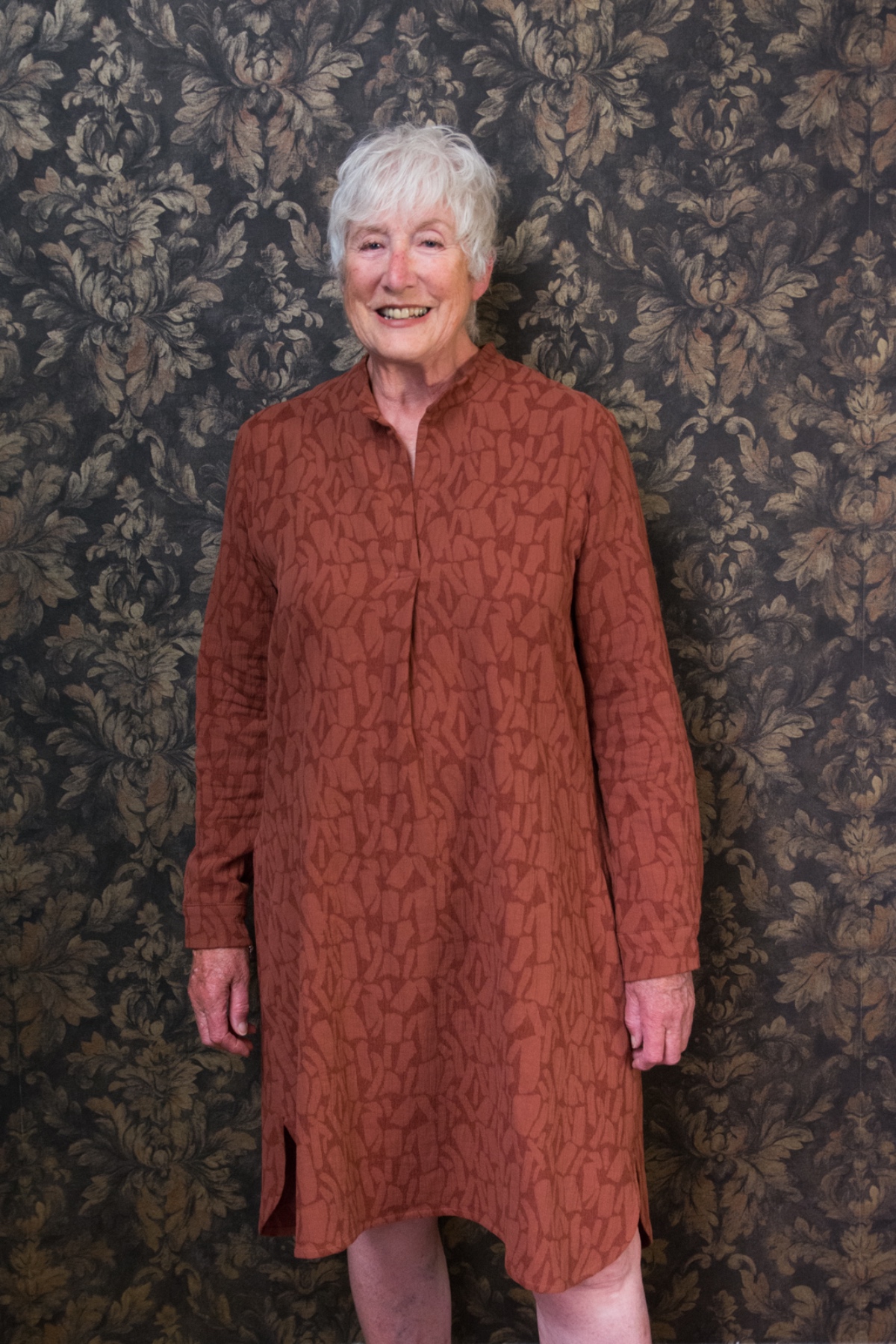
When it came to the second piece, however, the decision process took much longer. I narrowed it down to three patterns: the Cappuccino Dress, the Lisette B6567, and something else I had in mind. I made muslin versions of all three using some old bed sheets and sent them to her for a test run. None quite hit the mark. She loved the look of the Cappuccino Dress but preferred the fit of the Gallery Dress.
Challenge accepted! Here’s how I blended the two: Essentially, I focused on merging their center fronts. The new dress would feature the Cappuccino Dress's center front, pockets, and neckline, while keeping the Gallery Dress's fit and overall design.
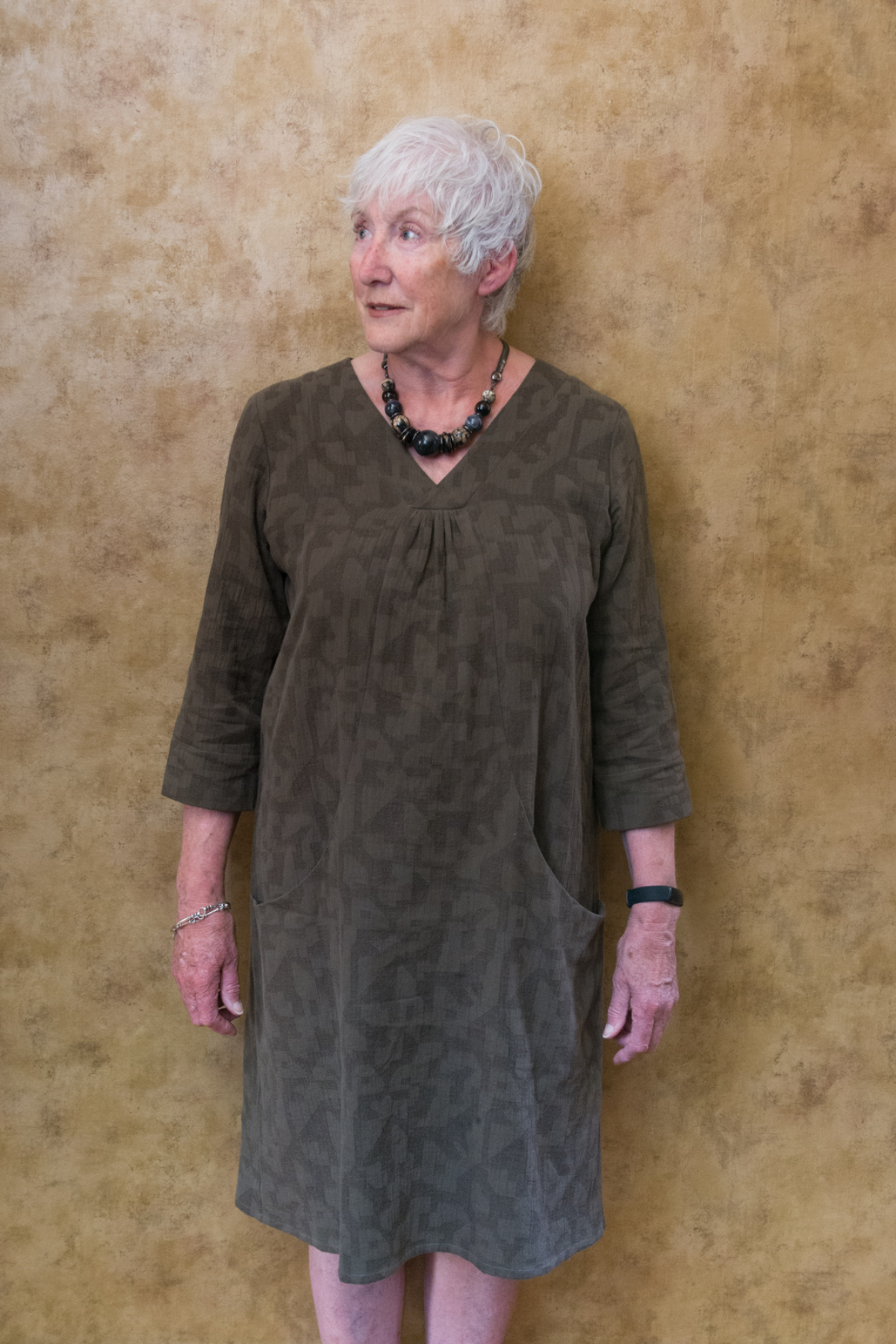
I use thin interfacing to trace my patterns, which makes them reusable and perfect for pattern manipulation. After tracing both patterns in the same size, I overlaid them to identify where I needed to merge the designs seamlessly.
Taking pictures of me holding big pieces of interfacing covered in scribbles wouldn't be particularly enlightening, so I made scaled-down versions of the patterns using cellophane to better illustrate the process.
Below are the front and back pieces for each pattern. Yellow represents the Gallery Dress, while red shows the Cappuccino Dress.
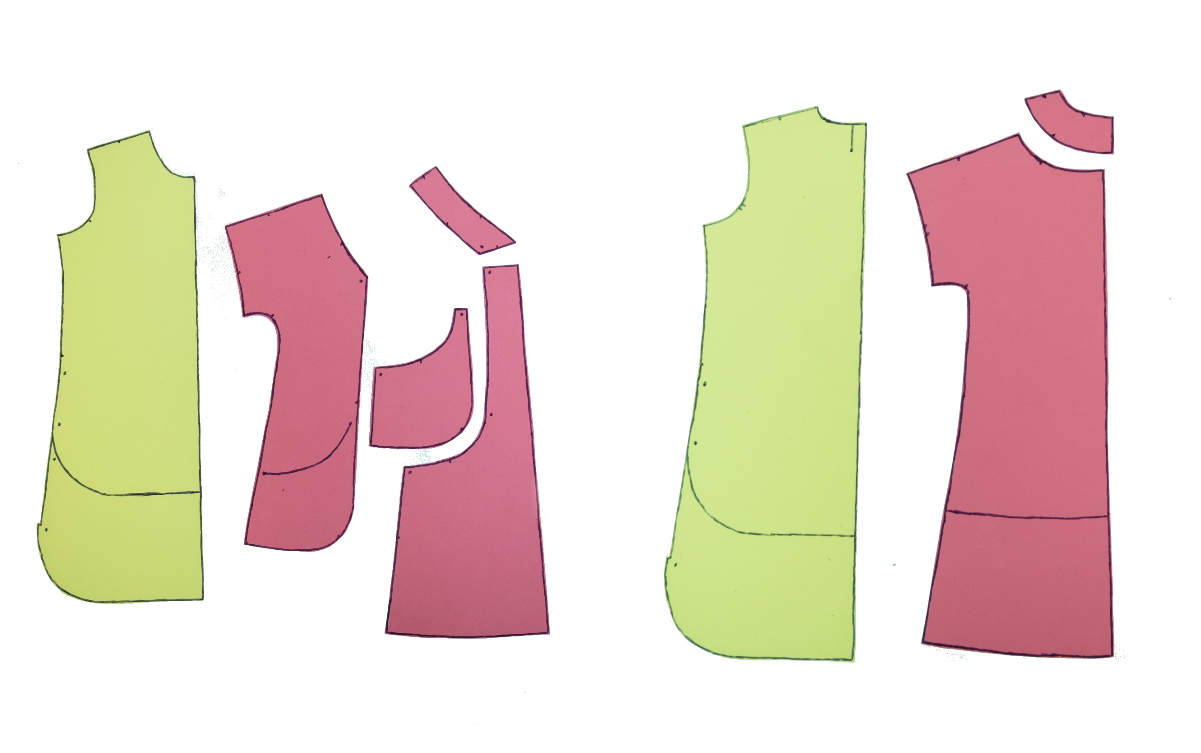
Identifying the center fronts wasn't straightforward. The Gallery Dress has a pleated placket below the center front, while the Cappuccino Dress features gathers under the neckline's "V."
In the image below, you can see how the Cappuccino Dress pieces align when sewn:
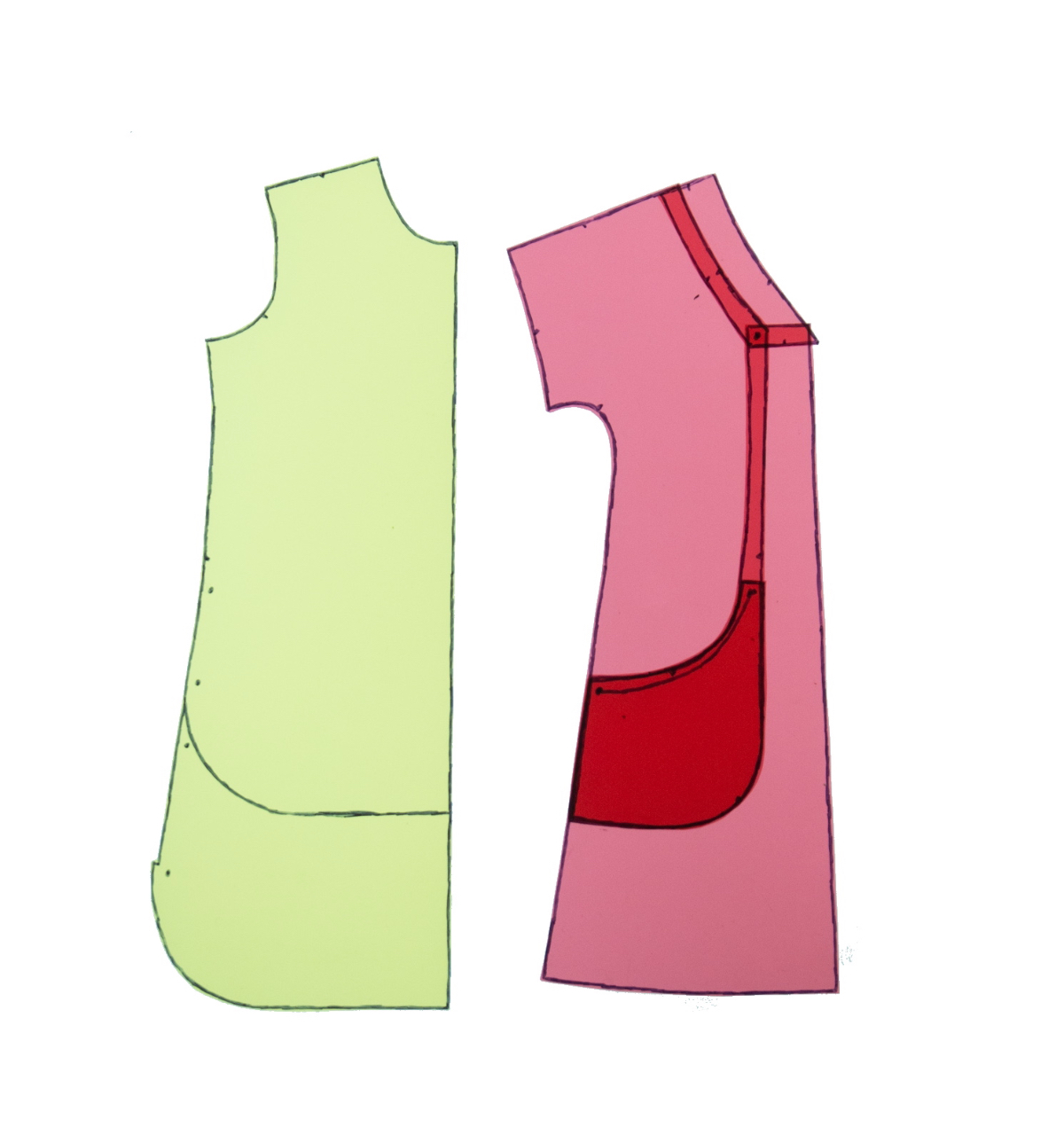
After marking the center fronts, I overlaid the patterns, matching their center lines. It looked something like this:
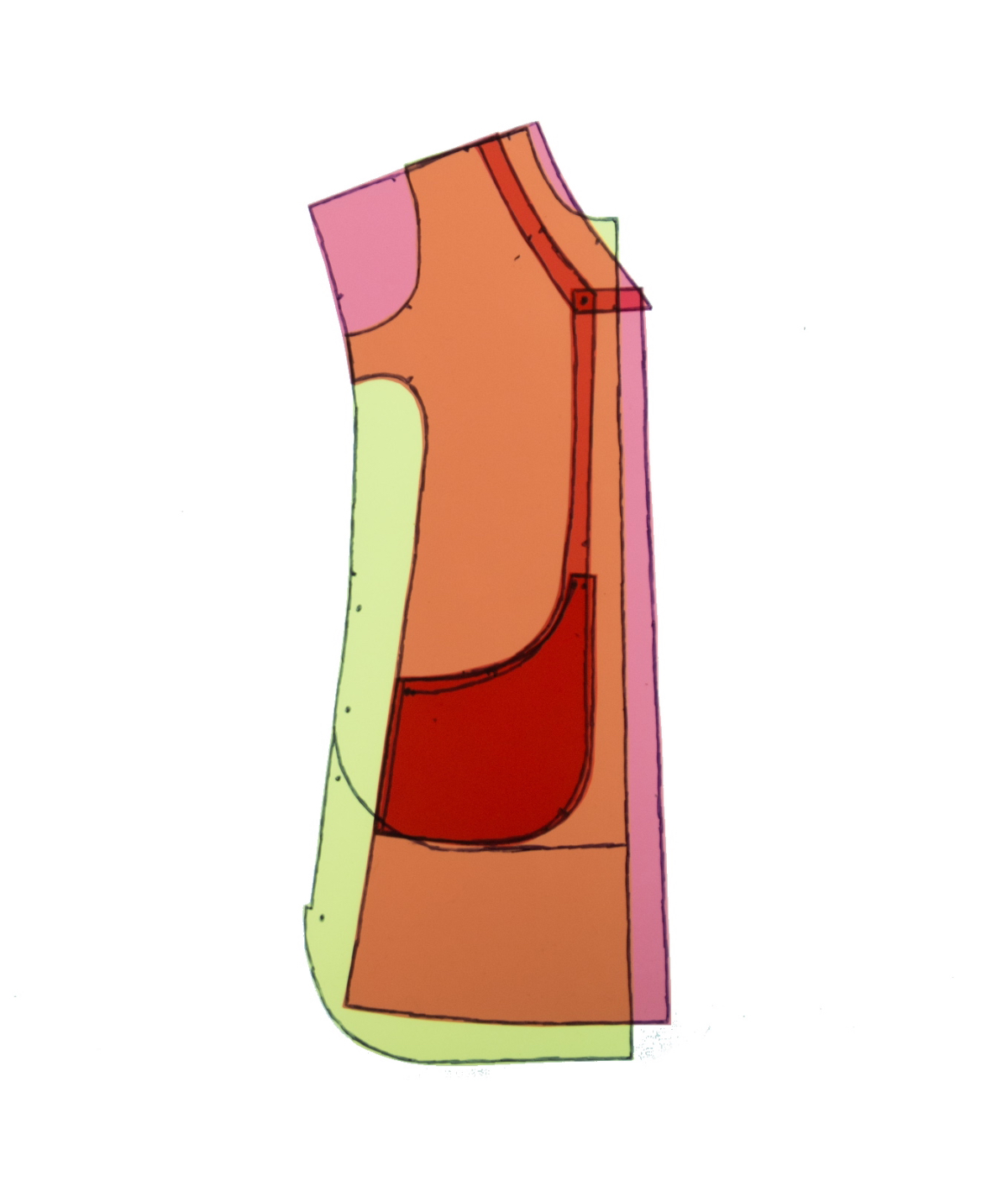
With the center fronts aligned, I drew directly onto a third interfacing tissue to smoothly transition from the Cappuccino center front to the Gallery shoulder, armscye, and side seam. Luckily, since both are Liesl + Co. patterns, the seam allowances matched perfectly.
I extended the Cappuccino center front panel to match the Gallery Dress's length and adjusted the pocket section to accommodate the wider side seam. I also omitted the Gallery Dress's curved hem, opting for a straighter finish. Below are my final front pattern pieces, highlighted in blue:
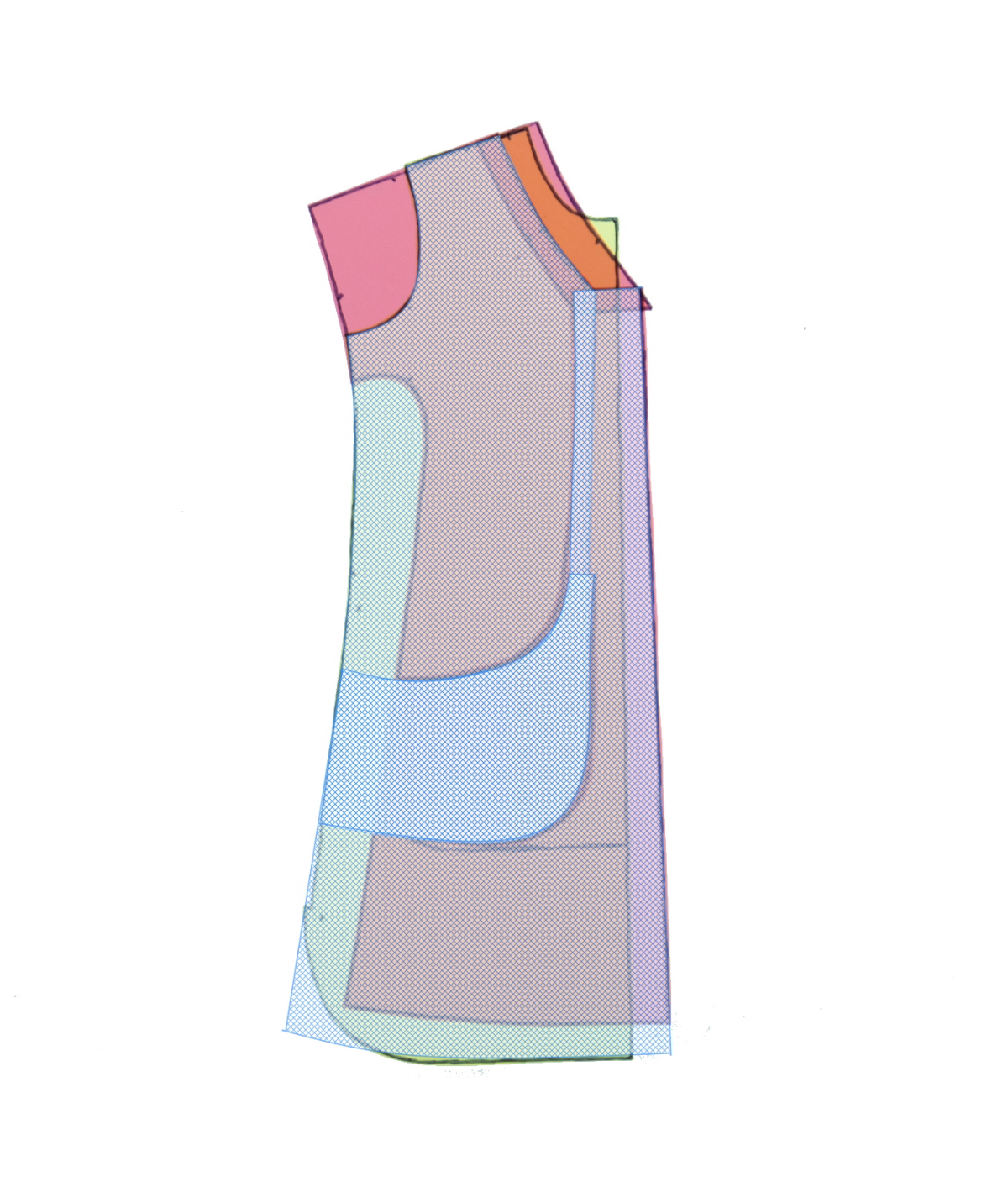
The Gallery Dress's back piece required minimal changes, only needing the Cappuccino neckband depth reduced slightly.
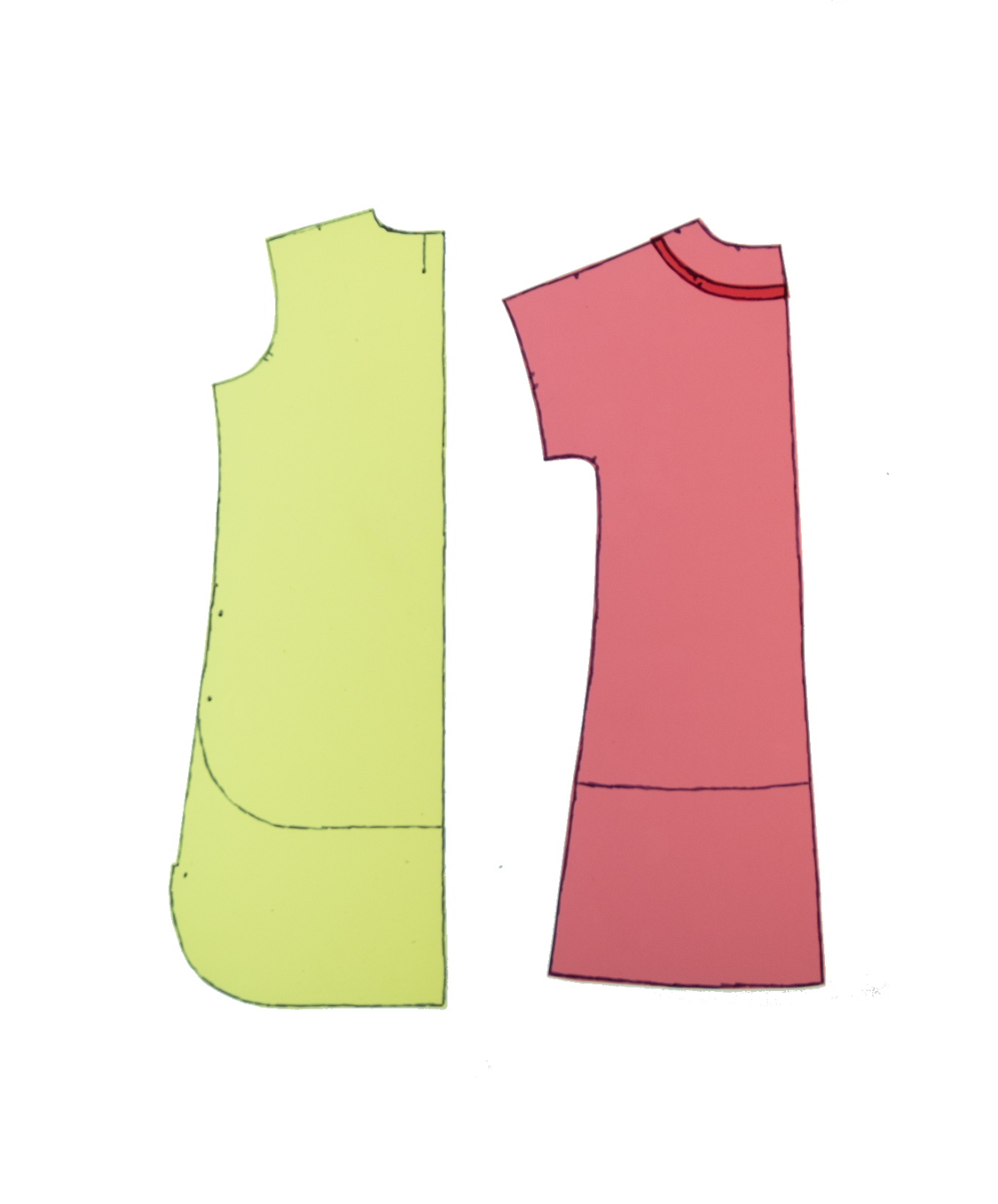
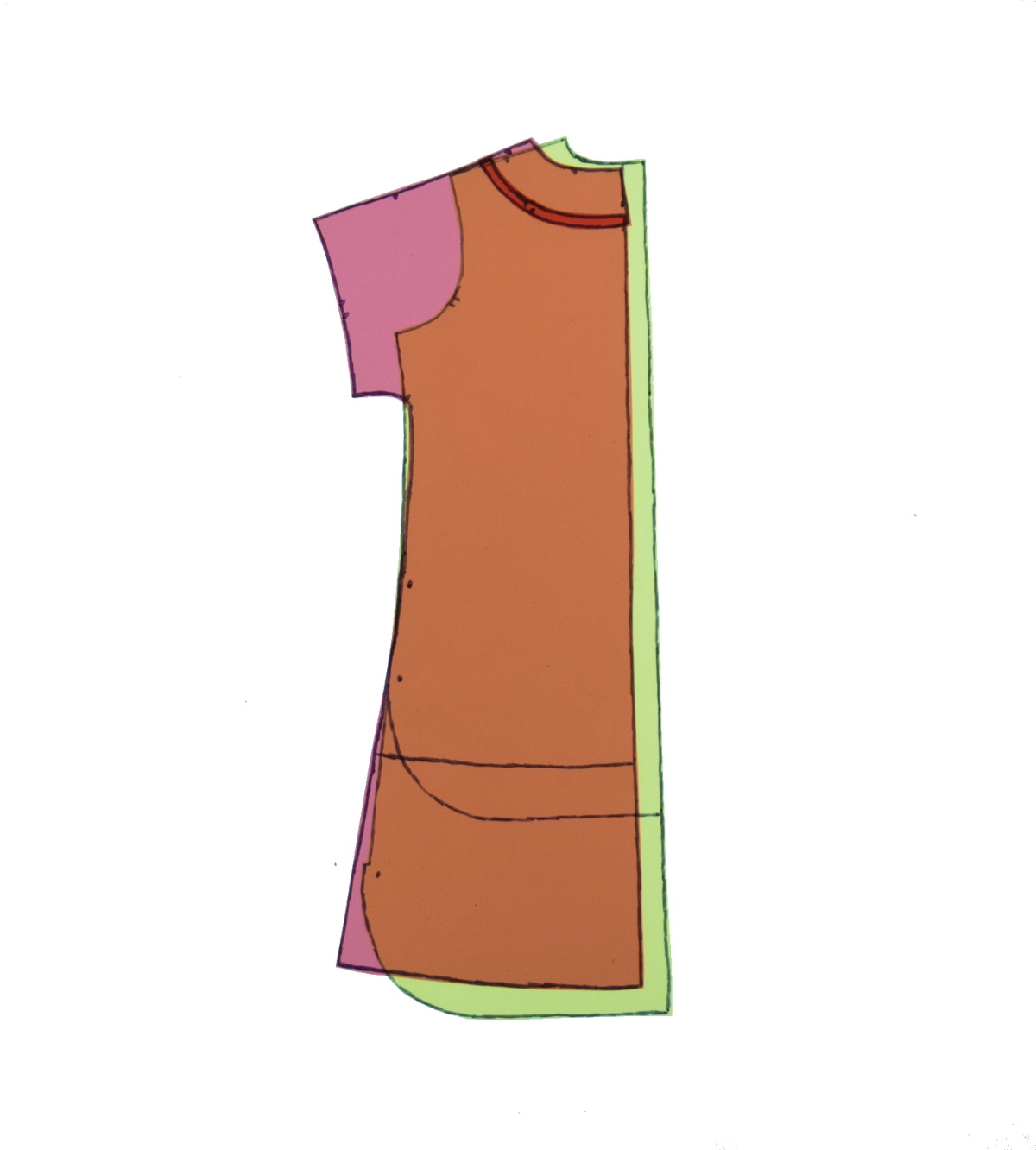

The sleeves remained identical to the Gallery Dress, as did the armscye. My mom requested three-quarter-length sleeves with a notched cuff similar to another dress she owns. This was quickly achieved by referencing the Melville Cardigan pattern.
The tricky part? Getting the measurements and math right for the center fronts. Once the pattern was finalized, I trusted my instincts and cut directly into the gifted fabric. If I’d had leftover old bedsheet fabric, I would have tested it first—a step I always recommend.
Sewing was straightforward. I followed the Cappuccino Dress instructions for the front, pockets, and neckline, then switched to the Gallery Dress instructions for the rest.
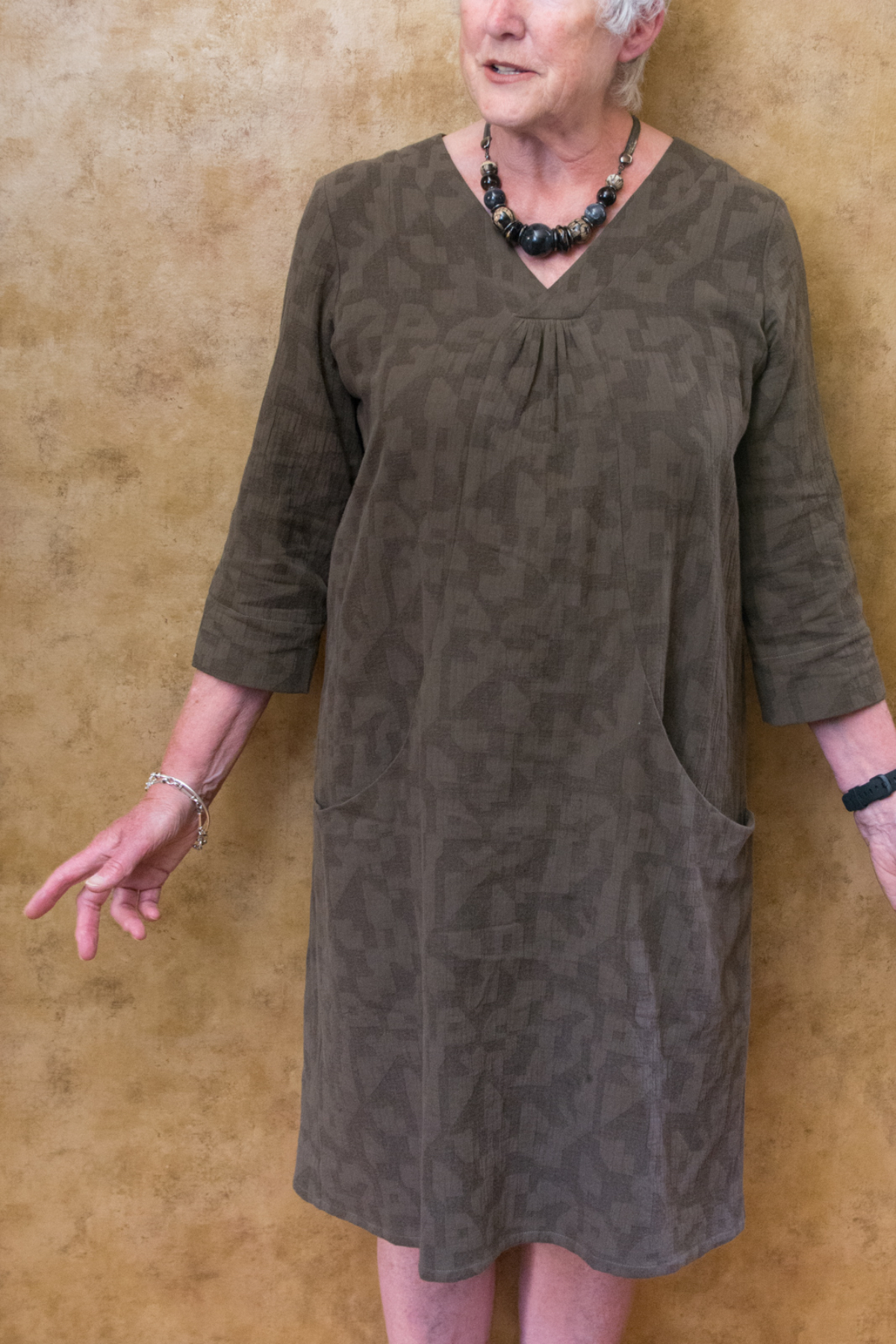
Everything came together beautifully, and I think I achieved exactly what she wanted: a dress that fits like the Gallery Dress but looks like something entirely different. Mission accomplished—and only in time for this Christmas!

I hope this story inspires others to take on their own sewing challenges. Whether it’s altering patterns or combining elements from different designs, the possibilities are endless. Happy sewing!